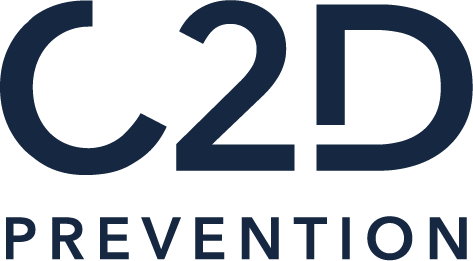ATELIER
Think Before You Act
Risk analysis tools LMRA

Does our brain need a prior analysis grid?
In a professional world driven by notifications, constant interruptions, and the pressure of real-time demands, attention has become a precious — and fragile — resource. Far from trivial, distraction creeps into even the most routine actions, opening the door to critical errors, omissions, or misunderstandings.
The “Think Before You Act” workshop offers a practical and interactive exploration of our cognitive functioning to identify what disrupts our focus and to relearn how to be fully present in our actions. Drawing on insights from neuroscience, real-life experiences, and practical challenges, it engages each participant in a process of active awareness and the strengthening of safety reflexes.
OBJECTIVE
CONTENT
- Awareness exercises on our limitations when multitasking and the associated risks
- Topics covered: multitasking, brain functioning, the pause minute
- Strategies to train the brain and stay safe
FORMAT
- Coaching : interactive discussions, role-playing
Escape Game
MAKE PREVENTION A REFLEX!
REGISTER YOUR COMPANY NOW
and ensure a safer work environment for everyone!
Format & Target Audience
The workshop can be delivered either in-person or remotely (via Virtual Instructor-Led Training — VILT), depending on your organization’s needs.
It is intended for all employees, supervisors, managers, and executives.
Ideal group size: 6 to 12 participants to ensure interactivity, practical exchanges, and personalized analysis.
Learning Objectives
- Understand the cognitive mechanisms of attention and distraction
- Identify the harmful effects of multitasking on safety and performance
- Recognize mental biases that make us blind to risks
- Become aware of the impact of interruptions in complex environments
- Develop individual and collective routines for refocusing
- Strengthen concentration skills in an unstable professional context
Pedagogical Approach
This workshop uses an experiential, stimulating, and accessible learning approach:
- A mix of neuroscience input, real-life experiences, and reflective analysis
- Immersive activities to physically experience the effects of distraction
- Group discussions to identify practical improvement levers
- Become aware of the impact of interruptions in complex environments
- Develop individual and collective routines for refocusing
- Led by a specialist in cognitive performance and behavioral safety
Depending on the time available
Workshop Programme
1Exploring the Limits of Attention
Cognitive Disruption Experience
Participants undergo real-time challenges to their divided attention capabilities: dual instructions, simultaneous tasks, sensory overload… The surprise effect highlights the gap between what we believe we control and what we actually execute.
Reflective Debriefing
Guided analysis of performance gaps, omissions, errors, and unconscious automatisms.
Objective:
Challenge the belief that we can “handle everything at once.”
2Understanding the Mechanics of the Multitasking Brain
Simplified Neuroscience Input
Two brain systems are covered:
- The automatic mode: fast, intuitive, but fallible.
- The reflective mode: slower, but more precise.
Participants learn to identify moments when their brain “disconnects” despite a feeling of control.
Visual Illustrations and Workplace Case Studies
Concrete examples of workplace errors due to overconfidence, momentary distraction, or unnoticed shifts into automatic mode.
Objective:
Understand that inattention is not an individual weakness, but a natural process that must be managed.
3Identifying and Deconstructing Cognitive Biases
Interactive Workshop on Mental Traps
Through quizzes, role-playing, and case studies, participants reveal various cognitive biases such as:
- Invincibility bias (“It won’t happen to me”)
- Familiarity bias (“I know this, I’ve got it under control”)
- Reactance bias (“If I’m told to be careful, I’ll do the opposite”)
Objective:
Raise awareness of internal mechanisms that weaken vigilance, even among skilled and experienced individuals.
4Refocusing & Attention Strategies
Immediate Refocusing Exercises
The group discovers practical techniques to maintain or regain concentration in real-life situations:
- Conscious breathing
- Active micro-breaks
- Transition rituals between tasks
Self-Diagnosis of Distraction Exposure
Participants assess their own sources of distraction: fatigue, cognitive overload, disruptive environment, time pressure…
Objective:
Provide a simple mental toolkit to strengthen presence and clarity in professional tasks.
5Cooperation and Shared Attention
Pair or Small Group Work
Participants collaborate to build concrete solutions for collective distraction scenarios: interrupted tasks, misheard instructions, sequence errors.
Targeted Collaboration Game
A timed exercise requiring coordination, listening, and shared attention, followed by a debriefing to extract transferable operational rules.
Objective:
Develop collective intelligence as a safeguard against individual failure.
Why choose
this workshop?
Because safety depends not only on procedures, but also on the attention given to every action.
By offering this workshop to your teams, you enable them to:
Recognize the hidden dangers
of distraction
Fully reconnect
with their actions
Prevent
costly errors
Co-create a shared vigilance culture,
where everyone looks out for one another
Conclusion & Call to Action
The “Think Before You Act” workshop transforms an abstract notion — vigilance — into a concrete, trainable, and rewarding skill.
Your teams will leave with a sharper awareness of their own vulnerabilities — but above all, with practical tools to address them,
both individually and collectively.
Interested in integrating this workshop into your prevention plan or safety training?
Contact us to design a version tailored to your specific business challenges.
